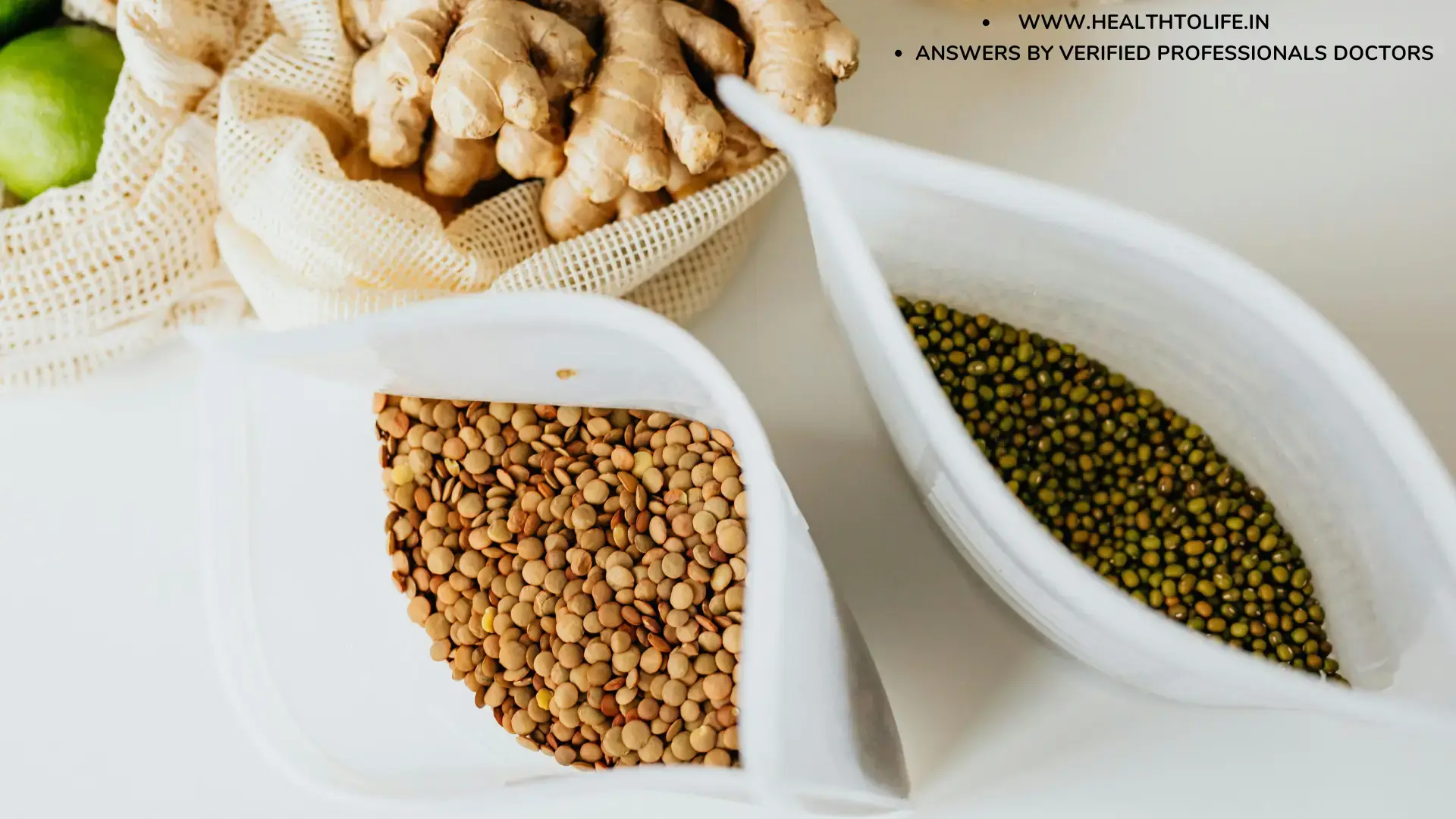
Are Lentils Good for Diabetics?
Yes! Lentils are an excellent food choice for diabetics. Packed with protein, fibre, and slow-digesting carbs, they help regulate blood sugar levels.
Unlike refined grains, lentils have a low glycemic index (GI), meaning they release glucose gradually, preventing spikes. Studies show that including lentils in a diabetic diet can improve long-term blood sugar control.
Plus, their high fibre content promotes fullness, aiding weight management—a key factor in diabetes care. Whether in soups, salads, or curries, lentils offer a nutritious, diabetes-friendly option.
Just remember to pair them with other balanced foods for optimal benefits.
Table of Contents
- Nutritional Benefits of Lentils for Diabetics
- How Lentils Help Manage Blood Sugar
- Best Ways to Cook Lentils for Diabetics
- Lentils vs Other Carbs for Diabetes
- Benefits of Lentils for Diabetics
- How to Maximize These Benefits?
- Answers By Verified Professionals Doctors
- Frequently Asked Questions (FAQ) About Lentils and Diabetes
- Conclusion: Why Lentils Are a Diabetic's Best Friend
- Related Video | Are Diabetics Recommended To Have Lentils?
Nutritional Benefits of Lentils for Diabetics
Lentils are a diabetes superfood! Rich in plant-based protein, they support muscle health without raising blood sugar. Their soluble fiber slows digestion, stabilizing glucose levels.
Lentils also provide iron, magnesium, and folate—nutrients often lacking in diabetic diets. Low in fat and calories, they help maintain a healthy weight. Regular consumption may reduce insulin resistance, making them a smart addition to meals.
From red to green varieties, each lentil type offers unique benefits for blood sugar management.
How Lentils Help Manage Blood Sugar
Lentils work wonders for blood sugar control. Their high fiber and protein content slow down carbohydrate absorption, preventing sudden glucose spikes. Research suggests that replacing high-GI foods with lentils can lower HbA1c levels over time.
Additionally, lentils contain resistant starch, which acts like a prebiotic, supporting gut health—a factor linked to better insulin sensitivity. Unlike processed carbs, lentils provide steady energy without crashes.
For diabetics, this means improved post-meal sugar levels and reduced cravings. Including half a cup of lentils in daily meals can make a significant difference in long-term diabetes management.
Best Ways to Cook Lentils for Diabetics
To maximize benefits, prepare lentils in healthy ways. Opt for boiling, steaming, or sprouting instead of frying. Pair them with non-starchy veggies and whole grains for balanced meals.
Avoid sugary sauces—season with herbs, garlic, or turmeric for flavor. Soaking lentils before cooking reduces anti-nutrients, improving digestibility. Try lentil soups, salads, or dals with minimal oil.
Portion control matters; stick to ½–1 cup per meal. These simple tweaks ensure you get all the nutrients without unwanted blood sugar swings.
Lentils vs Other Carbs for Diabetes
When managing diabetes, not all carbohydrates are created equal. Unlike refined grains and processed foods that cause rapid blood sugar spikes, lentils offer a slow, steady release of energy.
Their low glycemic index (GI) of around 30 makes them far superior to white rice (GI 73) or white bread (GI 75). Plus, lentils pack more protein and fiber than most carb sources—keeping you full longer while stabilizing glucose levels.
Studies show that swapping just half a serving of rice or potatoes with lentils can significantly improve post-meal blood sugar control. For diabetics, this makes lentils a clear carb-choice winner.
Benefits of Lentils for Diabetics
Lentils are a diabetes superfood, offering multiple benefits for blood sugar control and overall health. Here’s why they’re so effective:
1. Low Glycemic Index (GI)
With a GI score of around 30, lentils digest slowly, preventing sudden blood sugar spikes—unlike refined grains or processed carbs.
2. High Fiber Content
A single cup provides 15+ grams of fiber, which:
✔ Slows glucose absorption
✔ Improves insulin sensitivity
✔ Supports gut health
3. Rich in Plant-Based Protein
Lentils offer 18g of protein per cup, helping to maintain muscle mass without affecting blood sugar like animal proteins might.
4. Packed with Essential Nutrients
They’re loaded with:
- Magnesium (regulates insulin function)
- Iron (prevents anemia, which is common in diabetics)
- Folate (supports heart health)
5. Weight Management Support
Low in fat and calories but high in fiber, lentils promote fullness, reducing overeating and aiding in healthy weight loss—a key factor in diabetes control.
6. Heart-Healthy Benefits
Diabetes increases heart disease risk, but lentils help by:
✔ Lowering LDL (“bad”) cholesterol
✔ Reducing blood pressure (thanks to potassium)
How to Maximize These Benefits?
- Portion control: Stick to ½–1 cup per meal
- Healthy pairings: Combine with non-starchy veggies & whole grains
- Avoid processed versions: Choose dried or low-sodium canned lentils
By incorporating lentils into a balanced diet, diabetics can enjoy better blood sugar control, improved heart health, and long-term wellness.
Answers By Verified Professionals Doctors
- 1. Lentils are widely recommended as a smart food choice for individuals with diabetes. Lentils and many other pulses, like beans and chickpeas, can improve glycemic control in individuals with type 2 diabetes while reducing the risk of cardiovascular disease. They are a low glycemic nutrient-dense food, rich in dietary fiber and plant protein. In general, higher-fiber diets are associated with a lower risk of type 2 diabetes. As a bonus, lentils have a shorter cooking time compared to other hard-shelled pulses like beans, making them more convenient and easier to incorporate into the diet.
- 2. Lentils are a good plant protein for diabetics. They are high in fiber, which helps to slow the rise of blood sugar. This legume also helps to manage cholesterol levels. Lentils can be mixed with other carbohydrates like rice or potatoes to balance blood sugar after a meal.
- 3, Lentils are a type of Dals. They are a good source of protein. As diabetics need an adequate amount of protein including them in the diet helps in meeting the body’s requirements. They can be used in the form of dal preparations as part of the main course, khichdi, salads as well as soups.
- 4. Lentils such as peas, soy, broad beans, and beans are all recommended to be on a diabetic diet. Because of the great amount of fiber, which makes digestion slow and a great response of blood sugar.
- 5. Lentils are considered to have a low glycemic index, which helps to manage diabetes or high blood sugar. They are a source of fiber and potassium and are low in sodium, which will also help to reduce the risk of high blood pressure.
Learn more about health-related treatment options. Click here
Frequently Asked Questions (FAQ) About Lentils and Diabetes
Ques-1. How often should diabetics eat lentils?
Answer: 3-4 times per week is ideal. A standard serving is ½ to 1 cup of cooked lentils, balanced with other low-GI foods.
Ques-2. Do lentils raise blood sugar levels?
Answer: Very minimally. Their low GI and high fiber prevent spikes, making them safer than refined carbs. However, pairing them with fats (like olive oil) or proteins can further stabilize the glucose response.
Ques-3. Which lentil type is best for diabetics?
Answer: All are beneficial, but:
✔ Green/Brown lentils hold their shape well (great for salads)
✔ Red/Yellow lentils cook faster (ideal for soups)
✔ Black lentils have the highest antioxidant content
Ques-4. Can lentils replace meat in a diabetic diet?
Answer: Yes! Their high protein content (18g per cup) makes them an excellent plant-based alternative. Just ensure you’re getting enough vitamin B12 from other sources.
Ques-5. Are canned lentils okay for diabetics?
Answer: Yes, but rinse them thoroughly to remove excess sodium. Opt for no-salt-added versions when possible.
Ques-6. Do lentils help with insulin resistance?
Answer: Studies suggest yes! Their fiber and magnesium improve insulin sensitivity over time. Combined with exercise, they can be a powerful tool against Type 2 diabetes.
Ques-7. Can I eat lentils if I’m on diabetes medication?
Answer: Yes, but monitor your blood sugar closely. Their glucose-lowering effects may require adjusting medication doses (consult your doctor).
Ques-8. What’s the best way to cook lentils for diabetes?
Answer:
✔ Soak overnight to reduce anti-nutrients
✔ Boil or steam (avoid frying)
✔ Pair with veggies & healthy fats (e.g., lentils + spinach + olive oil)
Conclusion: Why Lentils Are a Diabetic’s Best Friend
For those managing diabetes, lentils aren’t just good—they’re one of nature’s perfect foods. Their unique combination of low glycemic impact, high fiber, and plant-based protein makes them a triple threat against blood sugar spikes.
Beyond glucose control, they deliver essential nutrients like magnesium, iron, and folate that address common diabetic complications, from heart disease to fatigue.
What truly sets lentils apart is their versatility and accessibility. Whether in a hearty soup, a refreshing salad, or a protein-packed curry, they adapt to any cuisine while keeping your blood sugar steady.
Unlike restrictive “diabetic foods,” lentils are budget-friendly, shelf-stable, and easy to prepare—qualities that make sustainable eating realistic.
Related Video | Are Diabetics Recommended To Have Lentils?
Was this article helpful?
Stay updated with the latest posts on HealthToLife—expert health tips, wellness trends, and life-changing advice you don’t want to miss. Click to explore.



